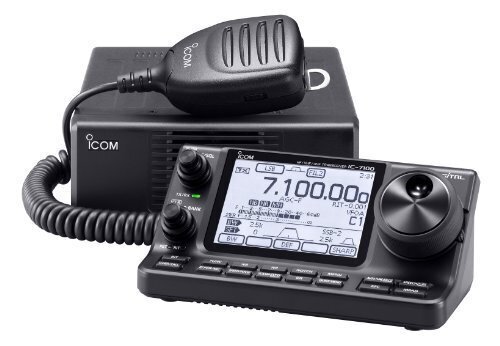Researching HF
I haven’t been on the air much lately because I’ve been doing more research than operations. I’ve been looking into a mobile radio to supplement my HTs and give me a little more power and reach, and I’m very attracted to a multi-band radio that includes HF. That’s taken me down an incredible rabbit hole of what all is possible outside of VHF/UHF.
Transceiver

The sheer amount of gear needed to get into HF is a little staggering. The transceivers themselves are, of course, pricey. Then one needs mobile antennas suited for the desired bands; mobile options range from basic “hamsticks,” a set of whip antennas which need to be swapped out when switching bands, all the way up to a motorized “screwdriver” antenna with its own hydraulic lift.
After that, you might need an antenna tuner (I’ve heard conflicting opinions about this), and at least an SWR meter if not a full antenna analyser to tell whether a tuner is needed. At least in a mobile setting, I’d actually rather swap out hamsticks than keep a tuner in the car which needs to be fiddled with in addition to the radio.
At this point I’m looking into either an Icom IC-7100 or a Yaesu FT-857D, but I don’t have any firm timelines on actually acquiring such. I’ll start with adding the necessary power wiring to my car (which is surprisingly intricate in itself) and go from there.
Digital Modes
On VHF, I’ve been enjoying using AX.25 for Winlink and BBS, so I’ve taken a look into HF digital
modes. Dave Casler KE0OG has a great video overview of the field,
and PSK-31 and FT8 both sound interesting.
The demos I’ve seen of FT8 with WSJT-X make QSOs look almost too easy, and the fact that there’s no free form, conversational payload doesn’t tickle my EmComm fancy. It doesn’t look like you could call in the cavalry with that combination, nor could you make a personal connection with someone halfway across the globe. However, it does look like a good gateway into contesting.
CW
By the time I decided to take my license exams, Morse code was no longer a requirement, but now I’m
taking my first steps. One of the best videos I found to describe
initially learning Morse code is by Richard Carpenter AA4OO. One
of the most helpful surprises was learning about the Farnsworth method: rather than trying to count
dits and dahs ever faster, instead learning the “shape of the sound” for each letter at full speed,
but adding more delay between characters for comprehension.
Of course, this means at least a little more gear. The thought alone of using a straight key is flaring up my tendinitis, so I intend to learn sending on probably an iambic dual-paddle key, or possibly a single-lever electronic key. Beyond that, apparently most radios come with the auto-keyer circuits built in, but I think it’d be useful to have a discrete electronic keyer for practice if nothing else, and there’s an open-source Arduino project to build one.
At some point I’ll probably learn to do Morse from computer keyboard as well, but I should learn how to do it the “hard” way first.